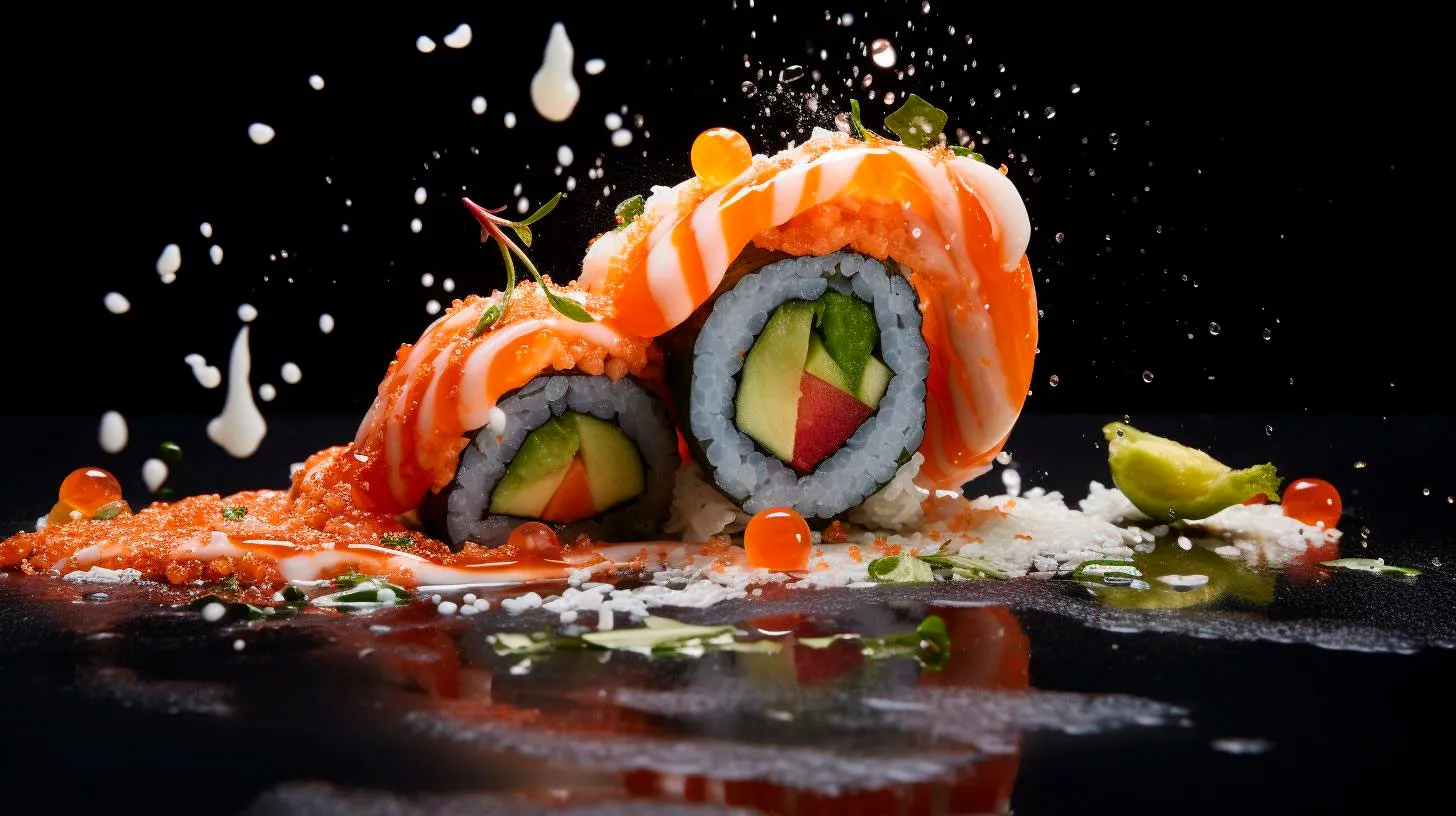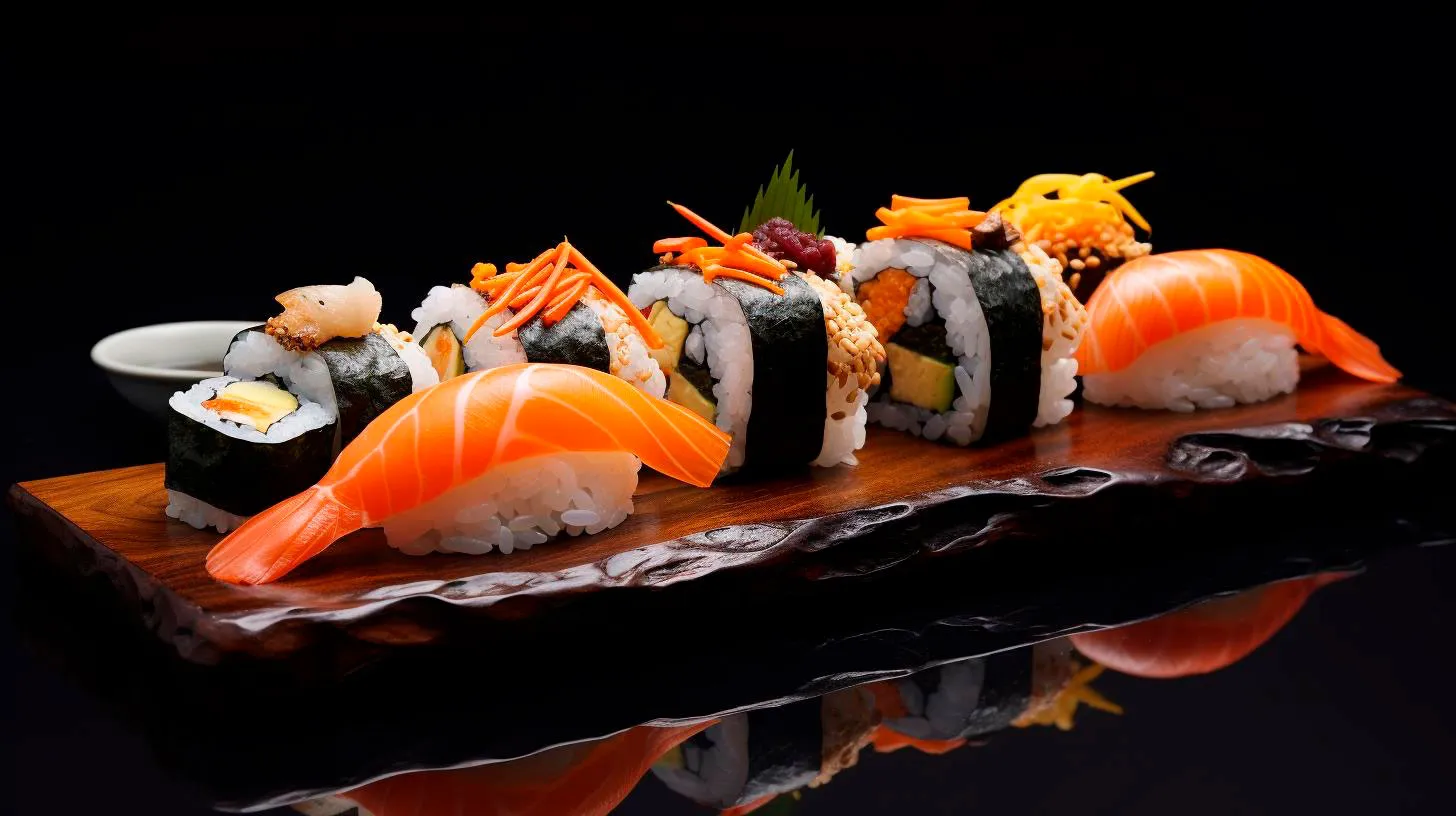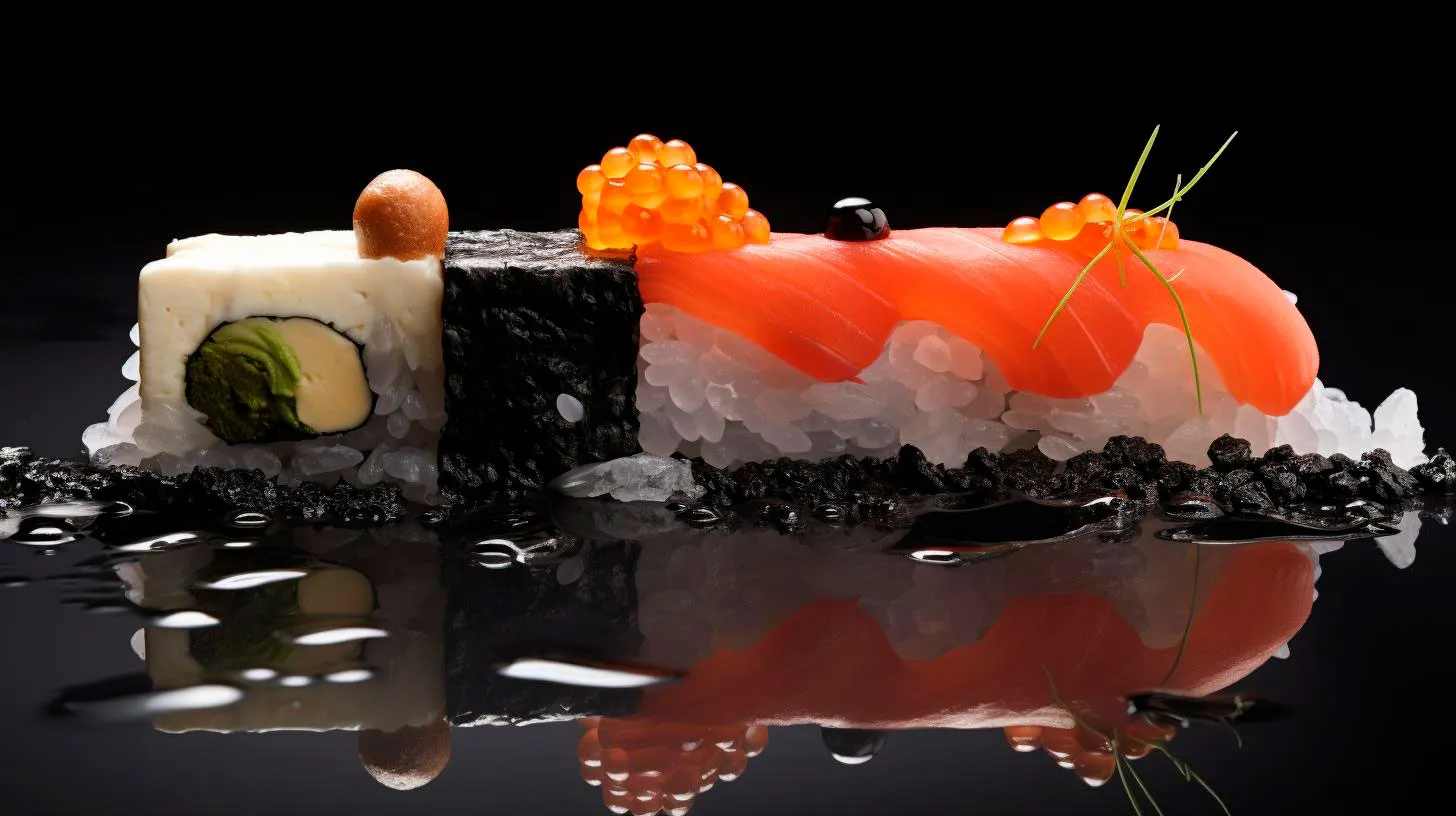Classic Japanese Techniques with a Vegetarian Twist
But fear not! In this article, we will explore some classic Japanese techniques and how they can be adapted to create delicious vegetarian dishes.
1. Umami: The Fifth Taste
Umami, known as the fifth taste, is a savory flavor that plays a crucial role in Japanese cuisine. Traditionally derived from ingredients like bonito flakes, dashi (a fish-based stock), and soy sauce, umami adds depth and complexity to dishes. However, vegetarians can still enjoy the umami experience by utilizing alternative ingredients:
- Replace bonito flakes with kombu seaweed to make a vegetarian dashi.
- Use shiitake mushrooms, fermented soy products like miso or tamari, and nutritional yeast to enhance umami in your dishes.
By experimenting with these ingredients, you can recreate that distinctive umami taste in your vegetarian meals.
2. Sushi: Beyond Fish
Sushi is undoubtedly one of Japan’s most iconic dishes. While it traditionally features raw fish, there are numerous vegetarian options available that are equally delicious:
- Try nigiri sushi with ingredients such as avocado, cucumber, pickled daikon, or tamago (a sweet Japanese omelet).
- Make vegetarian rolls using fillings like tempura vegetables, tofu, or sweet potato.
- Explore the variety of vegetarian sushi rolls available, such as the popular California roll with avocado and cucumber.
With these alternatives, you can enjoy the art of sushi while sticking to your vegetarian diet.
3. Ramen: The Vegetarian Way
Ramen, a comforting noodle soup, has taken the world by storm. Traditionally, it features a flavorful broth made from meat or seafood. However, there are vegetarian ramen options that are just as satisfying:
- Substitute the meat-based broth with vegetable broth or kombu seaweed stock.
- Add a variety of vegetables like mushrooms, bamboo shoots, bok choy, or corn for a filling and nutritious bowl of ramen.
- Experiment with different types of noodles, such as udon or soba, to create your own vegetarian ramen masterpiece.
With these adjustments, you can enjoy a steaming bowl of ramen without compromising your vegetarian preferences.
4. Tempura: The Crispy Delight
Tempura is another beloved Japanese dish that is traditionally made by deep-frying seafood and vegetables. Luckily, vegetarians can still indulge in this crispy delight:
- Use a variety of vegetables like sweet potato, pumpkin, eggplant, or zucchini as the main ingredients for tempura.
- Experiment with different batters, such as using cornstarch or rice flour, to achieve a light and crispy coating.
- Serve tempura with a flavorful dipping sauce like tentsuyu (a soy-based sauce) or matcha salt for an extra touch of Japanese flair.
With these simple substitutions, you can savor the satisfying crunch of tempura while following a vegetarian lifestyle.
Key Takeaways
Mastering the art of Japanese cuisine as a vegetarian is about understanding the key techniques and making clever ingredient substitutions. Here are the key takeaways:
- Explore umami-rich alternatives like kombu, shiitake mushrooms, miso, and tamari to enhance the savory taste in your dishes.
- Embrace vegetarian sushi with fresh ingredients like avocado, cucumber, or pickled daikon, and be adventurous with unique rolls.
- Create vegetarian ramen by swapping meat-based broth with vegetable broth, incorporating different vegetables, and experimenting with noodle varieties.
- Indulge in tempura by using a variety of vegetables and alternative batters while enhancing the experience with tasty dipping sauces.
By acquiring a good understanding of these classic Japanese techniques and embracing the vegetarian twist, you can enjoy a vibrant and flavorful culinary journey without compromising your dietary choices. So, get your apron on, and let’s explore the wonders of vegetarian Japanese cuisine!
Traditional Sushi Elements Reimagined for Vegetarian Palates
But fear not, because creative sushi chefs have come up with exciting variations that cater to vegetarian palates.
The Vegetarian Sushi Revolution
In recent years, the vegetarian and vegan movement has gained significant momentum, with more people adopting plant-based diets for various reasons such as health, environmental concerns, and animal welfare. To accommodate this growing demand, innovative sushi chefs have reinvented traditional sushi to create enticing options that are both vegetarian-friendly and delicious.
Let’s explore some of the reimagined sushi elements that make vegetarian sushi an absolute delight to indulge in:
1. Creative Vegetable Fillings
Gone are the days when sushi was just about raw fish. Today, sushi rolls are bursting with a colorful variety of vegetables. From crispy tempura-fried asparagus to creamy avocado and tangy pickled radishes, these vegetarian fillings add a vibrant and fresh touch to the rolls. Creative combinations of vegetables like cucumber, carrot, bell pepper, and sweet potato guarantee a palate-pleasing experience.
2. Plant-Based Protein
Being vegetarian doesn’t mean missing out on the protein-packed goodness of sushi. Chefs are now experimenting with plant-based alternatives to fish, such as tofu, tempeh, and even mock seafood made from seaweed and konjac. These plant-based proteins not only mimic the texture and flavors of fish but also provide a healthy dose of essential nutrients.
3. Flavorful Sauces and Marinades
Sauces play a vital role in sushi, adding depth and complexity to each bite. Vegetarian sushi embraces this concept by incorporating flavorful sauces and marinades that elevate the taste of the rolls. From zesty soy-based dressings to tangy ponzu and rich miso glazes, these sauces infuse each bite with an explosion of flavor, complementing the vegetable fillings perfectly.
4. Quinoa and Brown Rice
Traditionally, sushi rice is made with white rice. However, sushi chefs are now introducing healthier alternatives like quinoa and brown rice into their creations. Quinoa adds a delicate nuttiness to the rolls, while brown rice provides a chewier texture and additional fiber. These nutritious substitutes are perfect for those looking to make their sushi experience even healthier.
5. Creative Presentation
Sushi is as much about visual appeal as it is about taste. Vegetarian sushi rolls often feature intricately designed presentations that are visually stunning. Chefs use a variety of techniques such as colorful garnishes, edible flowers, and precise cutting styles to make each roll a work of art. When presented on a plate, these visually striking creations are bound to impress vegetarians and sushi lovers alike.
Key Takeaways
Traditional sushi is being reimagined to cater to vegetarian palates, offering an array of delicious options that go beyond raw fish. Here are some key takeaways from this sushi revolution:
- Vegetarian sushi incorporates creative vegetable fillings, providing a burst of flavors and textures.
- Plant-based proteins like tofu and tempeh are used as alternatives to fish, ensuring a protein-rich experience.
- Flavorful sauces and marinades enhance the taste of vegetarian sushi rolls.
- Quinoa and brown rice offer healthier alternatives to traditional sushi rice.
- Vegetarian sushi showcases stunning presentations that are visually appealing.
As the demand for vegetarian and vegan options continues to rise, sushi chefs are becoming increasingly innovative in their approach. By reimagining traditional sushi elements, they are opening up a whole new world of flavors and experiences for those who prefer plant-based diets. So, the next time you crave sushi, remember that there are plentiful and exciting vegetarian options available!
From Avocado to Tofu: The Art of Vegetarian Sushi Making
In this article, we will explore the art of vegetarian sushi making, from choosing the perfect fillings to mastering the rolling technique.
Why Vegetarian Sushi?
Making vegetarian sushi allows you to indulge in this beloved Japanese cuisine while aligning with your dietary choices. Vegetarian sushi not only offers a wide variety of flavors and textures but also provides numerous health benefits including:
- Promoting a plant-based diet rich in nutrients
- Reducing the intake of saturated fats and cholesterol found in fish
- Increasing the consumption of fiber, vitamins, and antioxidants
Choosing the Right Ingredients
Before diving into the sushi-making process, it’s important to select fresh and high-quality ingredients to ensure the best results. Here are a few key ingredients to consider:
1. Nori Seaweed Sheets
Nori seaweed sheets are an essential component of sushi rolls. They are rich in iodine, fiber, and minerals. Look for roasted nori sheets for a more flavorful experience.
2. Sushi Rice
Sushi rice, also known as “sumeshi,” is a short-grain rice variety that becomes sticky when cooked. Its stickiness helps the sushi roll hold its shape. Opt for high-quality sushi rice like Japanese short-grain rice for the best results.
3. Vegetables and Fillings
Vegetarian sushi offers a plethora of colorful and delicious vegetable options that can be used as fillings. Some popular choices include:
- Avocado
- Cucumber
- Carrot
- Radish
- Asparagus
- Mushrooms
- Tofu
The Art of Rolling
Now that you have gathered your ingredients, it’s time to master the art of rolling sushi. Follow these steps:
1. Prepare Your Workstation
Begin by laying out a bamboo sushi rolling mat and place a sheet of nori on top.
2. Spread the Rice
Wet your hands with water mixed with a little rice vinegar to prevent sticking. Spread a thin layer of sushi rice evenly over the nori, leaving a small border at the top to seal the roll.
3. Add Fillings
Place your desired fillings in a horizontal line across the center of the rice, ensuring not to overfill the roll.
4. Roll It Up
Using the bamboo mat to assist you, tightly roll the sushi from the bottom, pressing gently to create a compact and cylindrical shape. Apply a bit of water to the top border of nori to seal the roll.
5. Slice and Serve
Using a sharp knife dipped in water, slice the roll into bite-sized pieces. Serve with soy sauce, wasabi, and pickled ginger for an authentic sushi experience.
Vegetarian Sushi: Beyond Traditional Rolls
While mastering the art of rolling traditional sushi is essential, there are other creative ways to enjoy vegetarian sushi:
1. Sushi Bowls
Try assembling sushi rice, colorful veggies, and your favorite toppings in a bowl for a quick and satisfying sushi-inspired meal.
2. Hand Rolls
Bypass the rolling mat and nori sheets by creating hand rolls. Simply wrap your desired fillings in a sheet of lettuce or other leafy greens.
3. Sushi Burritos
Combine the flavors of sushi with the convenience of a burrito by using a large sheet of nori to wrap your fillings into a portable feast.
Conclusion
Vegetarian sushi provides a creative and delicious way to enjoy this Japanese culinary delight while staying true to your dietary preferences. By selecting the right ingredients, mastering the rolling technique, and exploring alternative sushi presentations, you can indulge in a variety of vegetarian sushi options. So, get creative, embrace your inner sushi chef, and let your taste buds embark on a vegetarian sushi adventure!



